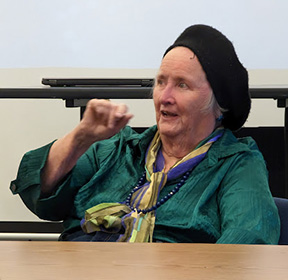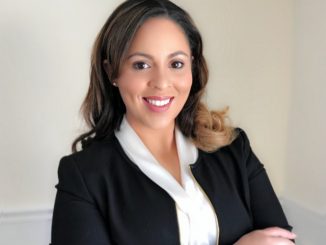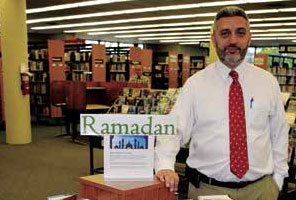
Tchochtkes and other things
I am going to qualify this presentation right from the start: it is not Antiques Roadshow – or Legacy List. I also am curious how many people here are familiar with the word “Tchochtkes”. Apparently, it only moved into American English in the 70s. Originally from Slavic languages, I heard via the Yiddish use – trinket or young woman.
My name is Louise Sandberg. I worked as a librarian/archivist for 23 years at the Lawrence Public Library – very happily I might add. I came upon piles and piles of historical material in both library buildings and was allowed, by the powers that were, to make some order out of them. It was my pleasure.
One thing that I learned from my experiences here was how much we as human beings leave behind when we go to the great beyond, that our heirs if we have them, do not know what to do with them. I was in contact with a gentleman who cleaned out houses for people during my time in Lawrence. Every now and then he would bring in material that he felt I could utilize to tell the history of this community.
This is material of no monetary value but might have some historical value. Most of this material would have ended up in garbage bags and into the trash. So, my feelings pushed me to contact individuals who were downsizing or just getting older and encourage them to make decisions about their property in a timely fashion.
Let us not forget the value to historians, museum personnel, and archivists. I firmly believe that most people really do not know that some of the material they have collected just might have value to others.
The idea of looking into my own life and possessions occurred to me when my father-in-law died and one of our responsibilities was to clear out their apartment of personal items.
I never got a clear idea of where my husband’s family hailed from. I don’t believe most of his family were interested, but here I found myself with photos, paintings, and a few objects that I, the archivist, was unable to entirely understand the provenance.
In going through the material, I found my first idea of sharing with other archives. I found early images of my mother-in-law’s life in Mt. Vernon, Westchester County, NY. I thought an archive in that area would like digital copies of these photos.
Well, they did and from that, I got copies of the family property deeds and later made contact with a cousin of one branch of Beerbohm family and started to find more about my husband’s family – Jewish genealogy is rather complicated.
It also came home to me when my 86-year-old sister died. Her daughter-in-law is still on occasion trying to identify various items from her home. I am now ¾ of a century of age. I am looking through my house now and identifying things that are important to either my husband or myself and labeling most of them.
Let us see where this takes us. Now is the time I am taking on separating tchotchkes from things that have value or meaning to me – or meaning to someone else.
Planning for the end
- Wills, financial matters, and property are important and should be dealt with. Take your time and consult with an attorney and get it all in order. This makes it easier on your descendants and gives you peace of mind.
- Create a file that allows your descendants to know where a variety of things are located. This can be digital or physical. Information to include: medical, attorney, tax preparer, accounts, insurance, decisions concerning remains, will, credit cards, charities, passwords, and finally, if you are inclined, your obituary.
- Keep all papers not related to your family separate. Organize them in whatever way suits you. Folders and drawers or boxes or scan everything and store them digitally, but make sure that they are accessible. Find a home for them.
- If you have documents, images, or items that are not personal try to find a good home for them. Items that were important to you in the past, but less so now consider, donation if there is an organization that might be interested. This list includes yearbooks, items that celebrated places you once lived, etc.
I will now bring up several recent donations I made: my father’s military academy uniform, 2 collections of materials that went off to the Tulsa Historical Society, and some wonderful items from my Girl Scout life have gone to a museum of the GS of northeastern Oklahoma, and just recently a pair of eyeglasses I found in the walls of my very old house.
- After retirement work-related material should be returned to your employer
Material that you created during membership in a nonprofit should go either to the original organization or to an archive that documents the subject or the location.
- This would include minutes, rosters, correspondence, or other organizational records. One century old organization that I documented in Lawrence had no minutes or rosters to give me. I imagined that they went home with various secretaries and never were organized and collected. Then discarded by the heirs.
- Audio: anything recorded on outdated media should be taken to someone who can turn them into a digital form.
- Video: anything recorded on outdated media should be taken to someone who can turn them into a digital form.
- One of my earlier attempts to document my life was after a college reunion contacting other students who went to Israel with me in 1968. I combined all the images collected and sent a DVD of them off to Brandeis University Archives. They were very remarkable. It was the year after the 6-day war and there are photos of the first prime minister of Israel and Yoni Netanyahu, brother or the present prime minister of Israel.
- Framed mages: This is complicated. If you think a framed image has value, either intrinsically or familial, type up information (location, individuals, dates, etc.), print it, and tape it to the back of the image. If you can scan the image label it and store it appropriately.
- You can include items (vases, dolls, statues) as well. I used some small tags with printed information attached for some of them; others have labels attached in hidden locations.
Family photographs:
- Scan them, label them, and store them appropriately. If you still have access to individuals who can help you identify people and locations, send them the images or go in person. This is often a good excuse to get together and talk about things.
- Finally, everything that you digitize should be saved somewhere, in Dropbox, other storage places, or on flash drives. Bring in someone good at the latest technology to give you advice.
- Type up family recipes and keep them in a file.
- If you do genealogy, leave at least a text file of what you know or use an app to create a family tree.
- There are now classes that help an individual to write their obituary. I found myself writing my sister’s obituary.
- Just a suggestion: stop buying books and DVDs. Check them out of your public library. I gave up trying to shelve all the books I had saved over the years. It also helps the library for patrons to check things out. You can now, here in Massachusetts check out material from all over the state very easily. Let me know if you want to know how.
- Both my offspring acquired several tee shirts. Each got a quilt of those shirts.
- Bits and pieces.
Finally, I found a home, YIVO Institute for Jewish Research, for a portrait of my grandmother-in-law as an infant and the papers about a play my father-in-law wrote.
- Her name was Bertha Hilda Samowitz Beerbohm nicknamed “Birdie”. They also wanted her recipes – they got them.
- Bye Bye Birdie




Be the first to comment